Maike Rees
Non-invasive Localization of the Ventricular Excitation Origin Without Patient-specific Geometries Using Deep Learning
Sep 16, 2022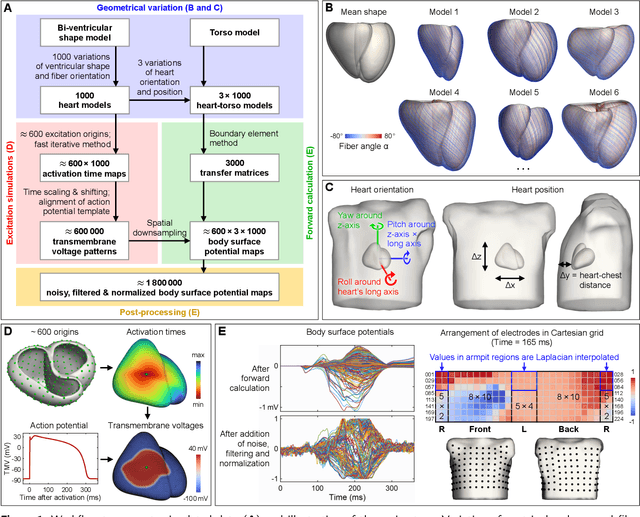

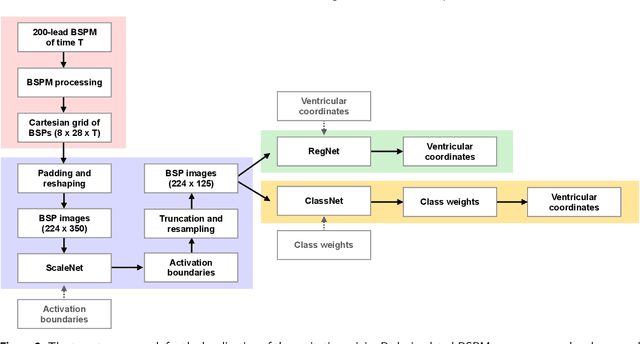
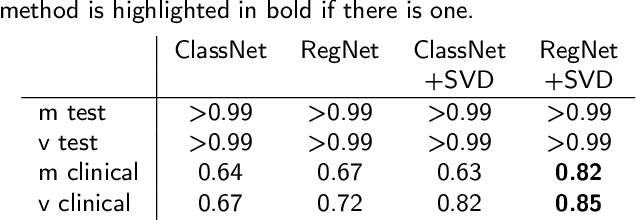
Abstract:Ventricular tachycardia (VT) can be one cause of sudden cardiac death affecting 4.25 million persons per year worldwide. A curative treatment is catheter ablation in order to inactivate the abnormally triggering regions. To facilitate and expedite the localization during the ablation procedure, we present two novel localization techniques based on convolutional neural networks (CNNs). In contrast to existing methods, e.g. using ECG imaging, our approaches were designed to be independent of the patient-specific geometries and directly applicable to surface ECG signals, while also delivering a binary transmural position. One method outputs ranked alternative solutions. Results can be visualized either on a generic or patient geometry. The CNNs were trained on a data set containing only simulated data and evaluated both on simulated and clinical test data. On simulated data, the median test error was below 3mm. The median localization error on the clinical data was as low as 32mm. The transmural position was correctly detected in up to 82% of all clinical cases. Using the ranked alternative solutions, the top-3 median error dropped to 20mm on clinical data. These results demonstrate a proof of principle to utilize CNNs to localize the activation source without the intrinsic need of patient-specific geometrical information. Furthermore, delivering multiple solutions can help the physician to find the real activation source amongst more than one possible locations. With further optimization, these methods have a high potential to speed up clinical interventions. Consequently they could decrease procedural risk and improve VT patients' outcomes.
Robustness of Generalized Learning Vector Quantization Models against Adversarial Attacks
Mar 09, 2019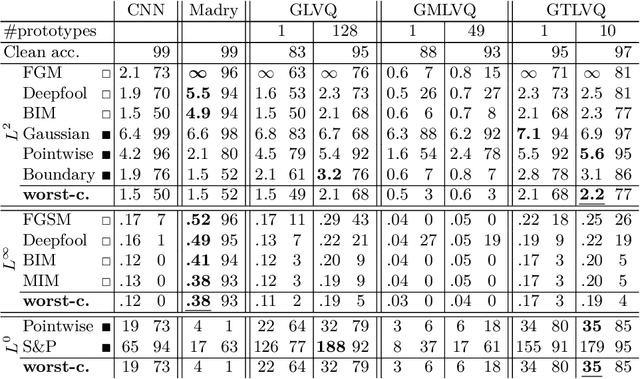
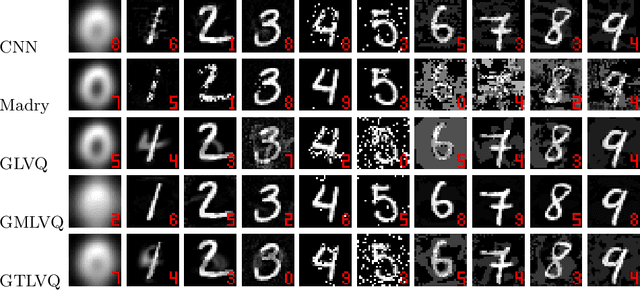
Abstract:Adversarial attacks and the development of (deep) neural networks robust against them are currently two widely researched topics. The robustness of Learning Vector Quantization (LVQ) models against adversarial attacks has however not yet been studied to the same extent. We therefore present an extensive evaluation of three LVQ models: Generalized LVQ, Generalized Matrix LVQ and Generalized Tangent LVQ. The evaluation suggests that both Generalized LVQ and Generalized Tangent LVQ have a high base robustness, on par with the current state-of-the-art in robust neural network methods. In contrast to this, Generalized Matrix LVQ shows a high susceptibility to adversarial attacks, scoring consistently behind all other models. Additionally, our numerical evaluation indicates that increasing the number of prototypes per class improves the robustness of the models.
Prototype-based Neural Network Layers: Incorporating Vector Quantization
Jan 18, 2019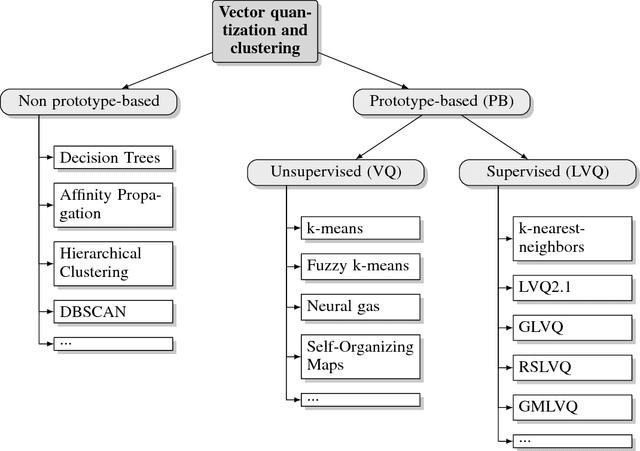
Abstract:Neural networks currently dominate the machine learning community and they do so for good reasons. Their accuracy on complex tasks such as image classification is unrivaled at the moment and with recent improvements they are reasonably easy to train. Nevertheless, neural networks are lacking robustness and interpretability. Prototype-based vector quantization methods on the other hand are known for being robust and interpretable. For this reason, we propose techniques and strategies to merge both approaches. This contribution will particularly highlight the similarities between them and outline how to construct a prototype-based classification layer for multilayer networks. Additionally, we provide an alternative, prototype-based, approach to the classical convolution operation. Numerical results are not part of this report, instead the focus lays on establishing a strong theoretical framework. By publishing our framework and the respective theoretical considerations and justifications before finalizing our numerical experiments we hope to jump-start the incorporation of prototype-based learning in neural networks and vice versa.
 Add to Chrome
Add to Chrome Add to Firefox
Add to Firefox Add to Edge
Add to Edge